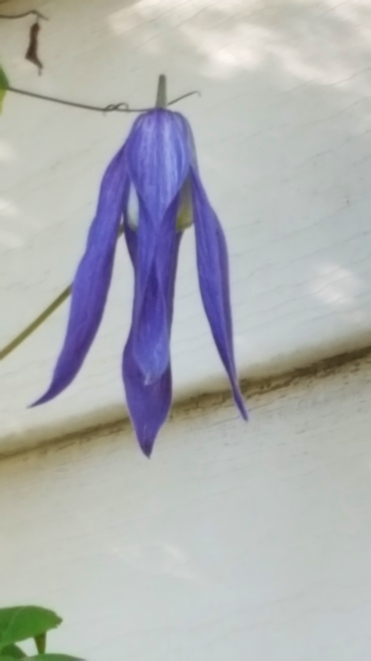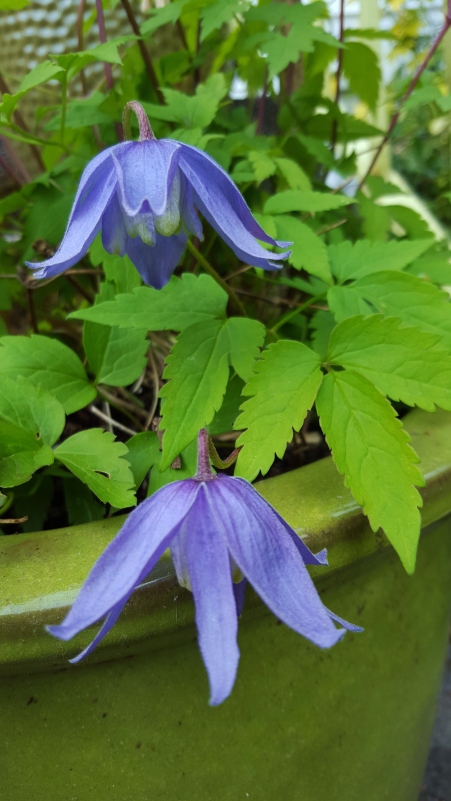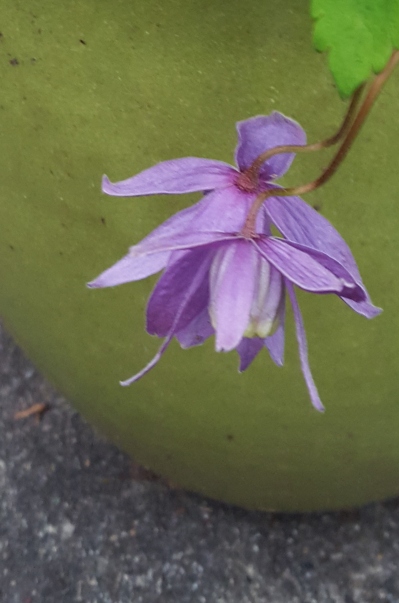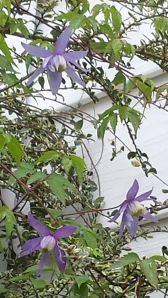
First Entries in the 2013 Clematis Spreadsheet
Yesterday, the time had come for my first clematis walk of the season. I grabbed my clipboard and headed outside to check out all the clematis on my five-page spreadsheet. As I moseyed through the garden, I took a good hard look at each clematis—if it was doing ok, I put a check next to it in the column for the day. When I saw no sign of life, I jotted down a question mark. If any had shown signs of the dreaded clematis wilt, I would have written a W and quickly cut away all the damaged parts of the vine (phew—no such dastardly signs on this walk!). If the clematis sported buds, I wrote in a B. If it was in bloom, I counted the blooms (later in the season I often have to guestimate, especially when a plant has more than 100 blooms) and put in that number in the chart.
Lessons from Clematis Walks
My clematis walks are leisurely and enjoyable, but they have also taught me many lessons about clematis. For example, I’ve learned that some of the large-flowered May-June bloomers can actually be in bud for six-to-eight weeks before the first flower opens! Talk about anticipation. Given Seattle’s dank weather, I often find early signs of slug damage, prompting me to use Sluggo pronto. Wilt gets dealt with quickly. I am able to direct the growth of the clems before they get too settled into their own sense of direction (usually up). I have also learned when to expect blooms. Because I have been keeping clematis spreadsheets for years, I can compare bloom times from year to year and try to anticipate when each clematis will bloom in the current year.

Clematis recta ‘Purpurea’
On yesterday’s walk, I noted that three Clematis alpinas were blooming, especially Clematis ‘Blue Dancer,’ with 60 blossoms. My New Zealand Clematis ‘Pixie’ had 20 creamy white blooms. Though according to last year’s spreadsheet, my Clematis recta ‘Purpurea’ won’t bloom til mid-June, it’s already making a show in April with its deliciously dark purple leafy stems topped with fat juicy vegetative buds. I have a similar hybrid, Clematis recta ‘Lime Close’ (aka ‘Serious Black’), which I purchased at the Flower Show in February (see earlier post for more info). I can’t compare the two, though, because Clematis recta ‘Lime Close’ hasn’t broken dormancy yet–I purchased it bare-root and left it outside in the cold (in a pot) to fend for itself. I expect to see new growth any time now.

Clematis ‘Rebecca’
Clematis ‘Rebecca’, a new one that showed up on my doorstep this spring, surprised me with a beautiful flower already. Because it arrived in only a four-inch pot, I repotted it into a larger pot, where it will live til fall when I will find it a more permanent home in the ground.
During my first clematis walk of the season, I found seventeen clematis in bud, five with blooms, and nine showing no signs of life (yet). With all the rain we’ve been getting lately, several showed signs of slug damage. I also noted that five of my clematis weren’t even on my spreadsheet, for Pete’s sake, a problem I quickly rectified. So I now I know that I have 142 clematis (not counting seedlings), both in the ground and in pots.
I wonder what I’ll learn from next week’s clematis walk.
 P.S. Just had to show you my sweet little Italian plum tree, its crown spangled with blossoms and its trunk cloaked in clematis vines.
P.S. Just had to show you my sweet little Italian plum tree, its crown spangled with blossoms and its trunk cloaked in clematis vines.













































